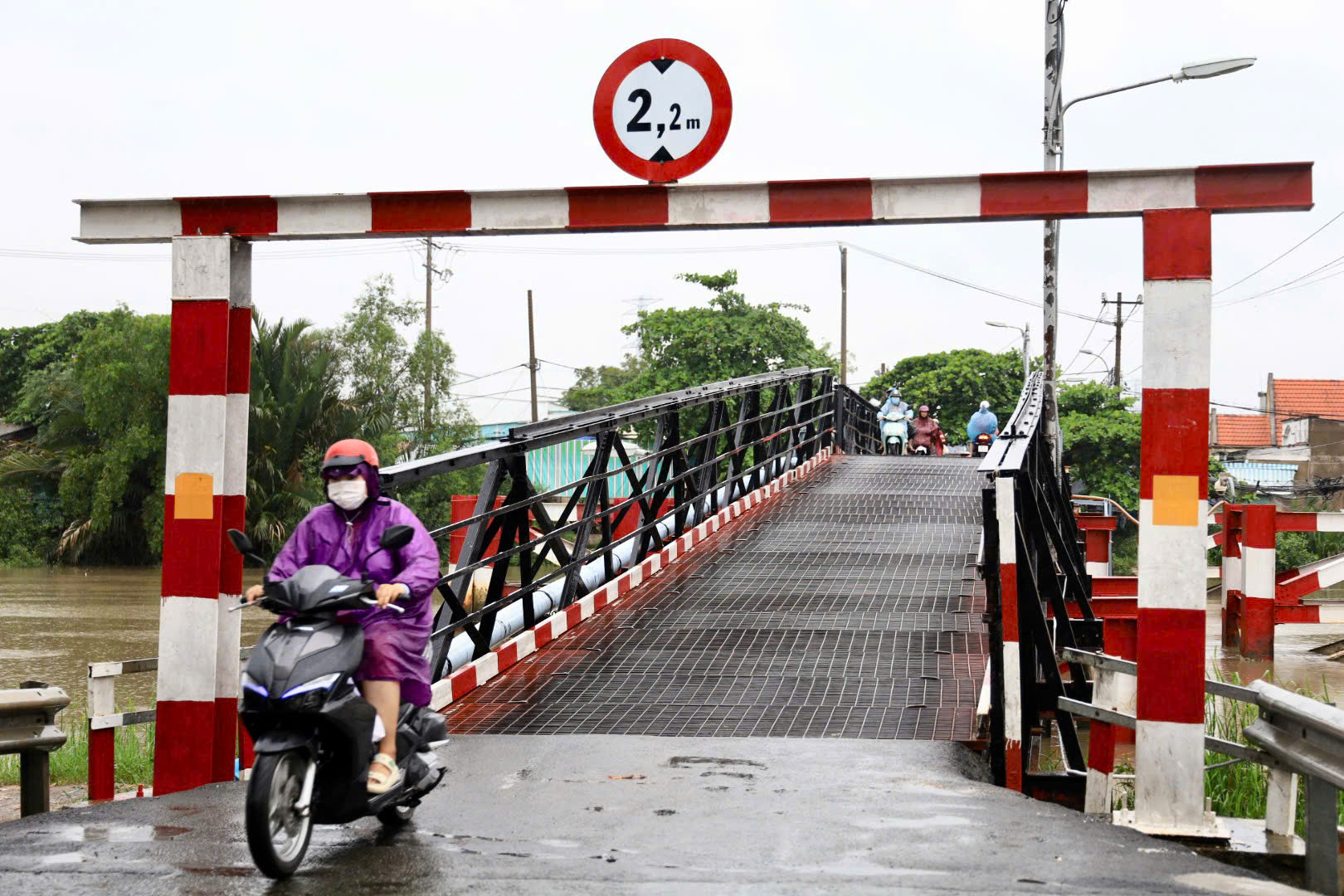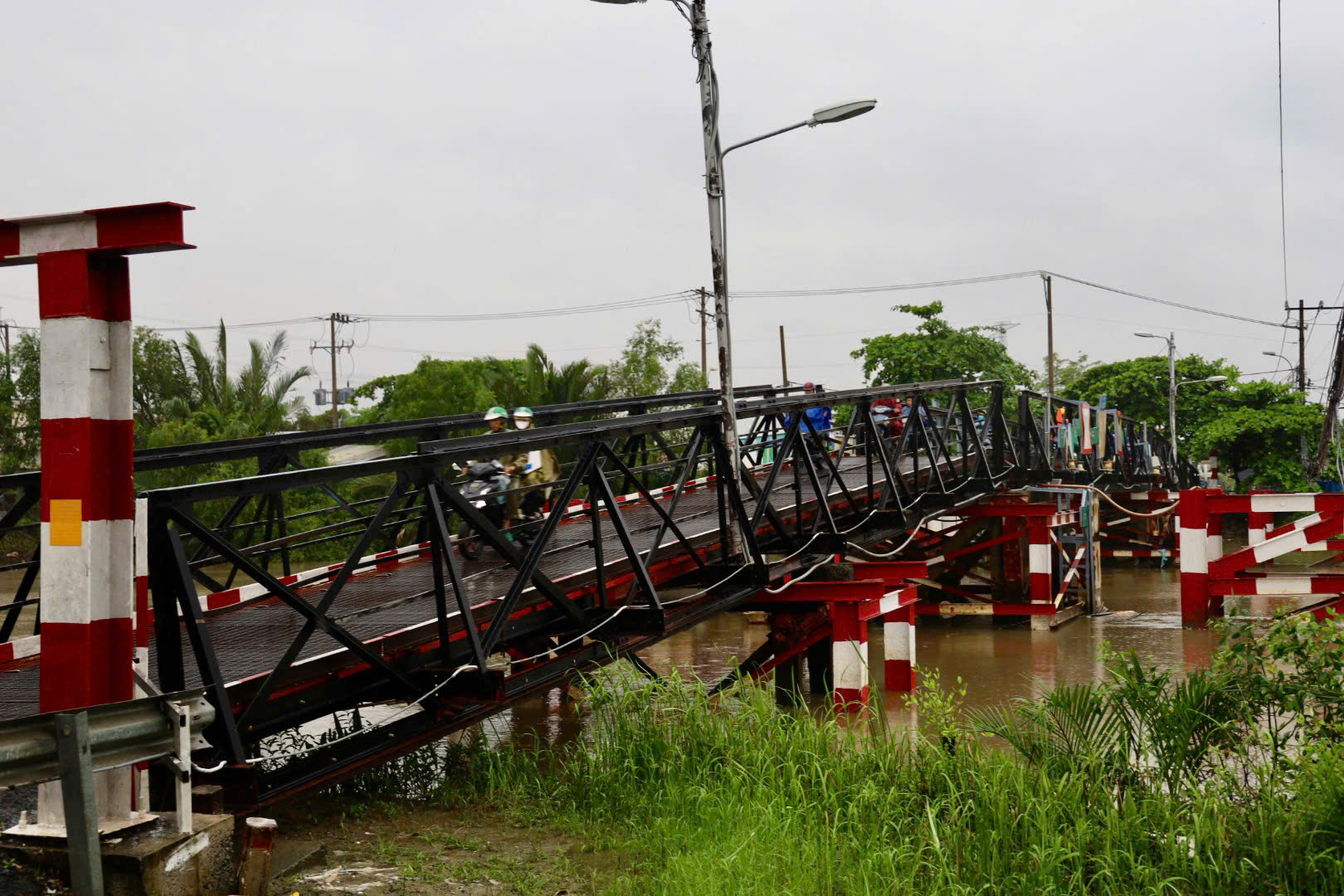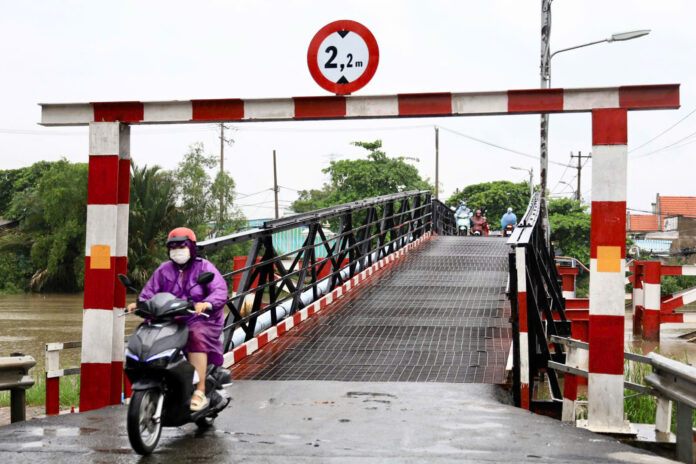Ho Chi Minh City will officially commence the construction of Rach Tom Bridge on June 27, marking a significant step forward in the efforts to improve the transport infrastructure in the city’s south area, a strategic connection between Ho Chi Minh City and Long An province.
This is one of the key projects expected to help alleviate the long-standing traffic congestion in the southern part of the city.

Ho Chi Minh City to commence construction of Rach Tom Bridge in Nha Be district on June 27
The Rach Tom Bridge project is being developed along Le Van Luong Street in Nha Be district, with a total length of over 683 meters. The main bridge spans 171 meters and is 15 meters wide, while the approach roads on both sides are over 512 meters long and 29 meters wide. With a total investment of nearly VND 500 billion, the project is under the management of the Ho Chi Minh City Transport Works Construction Investment Management Authority.
The existing Rach Tom Bridge is a steel bridge constructed before 1975. Over the years, the bridge has deteriorated significantly, with a damaged deck, rusty railings, and no longer ensuring safety for vehicles and pedestrians.
Although the new bridge project was approved in 2019, construction could not begin due to a lack of allocated funds. It was only in late 2024 that the Ho Chi Minh City People’s Council passed a resolution to reclaim 3.1 hectares of land for the project. The new Rach Tom Bridge is expected to be completed and put into use by 2026.
Le Van Luong Street is home to three other steel bridges constructed before 1975, namely Long Kieng, Rach Dia, and Rach Doi Bridges. The Long Kieng and Rach Dia Bridges have already been replaced with new concrete bridges, completed in 2023 and 2024, respectively, significantly reducing traffic congestion on this route.

The existing Rach Tom Bridge, built before 1975, has deteriorated significantly over the years
The last remaining steel bridge on the route, Rach Doi Bridge, has also been approved for investment by the Ho Chi Minh City People’s Council since 2016, with a total investment of over VND 780 billion. The project will include a bridge spanning approximately 452 meters and a 15-meter-wide road, along with approach roads on both sides stretching about 300 meters and 29 meters wide. The Ho Chi Minh City Transport Works Construction Investment Management Authority is expediting the completion of relevant procedures to commence construction in the near future.
Le Van Luong Street plays a pivotal role in facilitating trade between Ho Chi Minh City and Can Giuoc district in Long An province. Replacing all four old steel bridges with concrete ones will not only alleviate traffic congestion and increase traffic capacity but also reduce travel time, minimize accidents, and boost socio-economic development in the southern part of Ho Chi Minh City and adjacent areas.
Once these projects are completed, the transport infrastructure in the region will undergo a remarkable transformation, laying the groundwork for future urbanization and expansion of the city.
Unlocking TPHCM’s Potential: Navigating the Clash of Competing Urban Plans
When evaluating investment projects, agencies and investors often face a dilemma: determining which master plan the project should conform to and what specific details it should entail.
“The Dynamic Duo”: How Mergers and Infrastructure are Supercharging Ho Chi Minh City’s Real Estate Market
The approval of the resolution to merge provinces and cities by the National Assembly on June 12, 2025, has immediately brought the real estate market of the new Ho Chi Minh City (encompassing Ho Chi Minh City, Binh Duong, and Ba Ria-Vung Tau) into the spotlight. With the largest economy and population in the country, the real estate landscape in this region is anticipated to undergo significant transformations in the upcoming period.













































